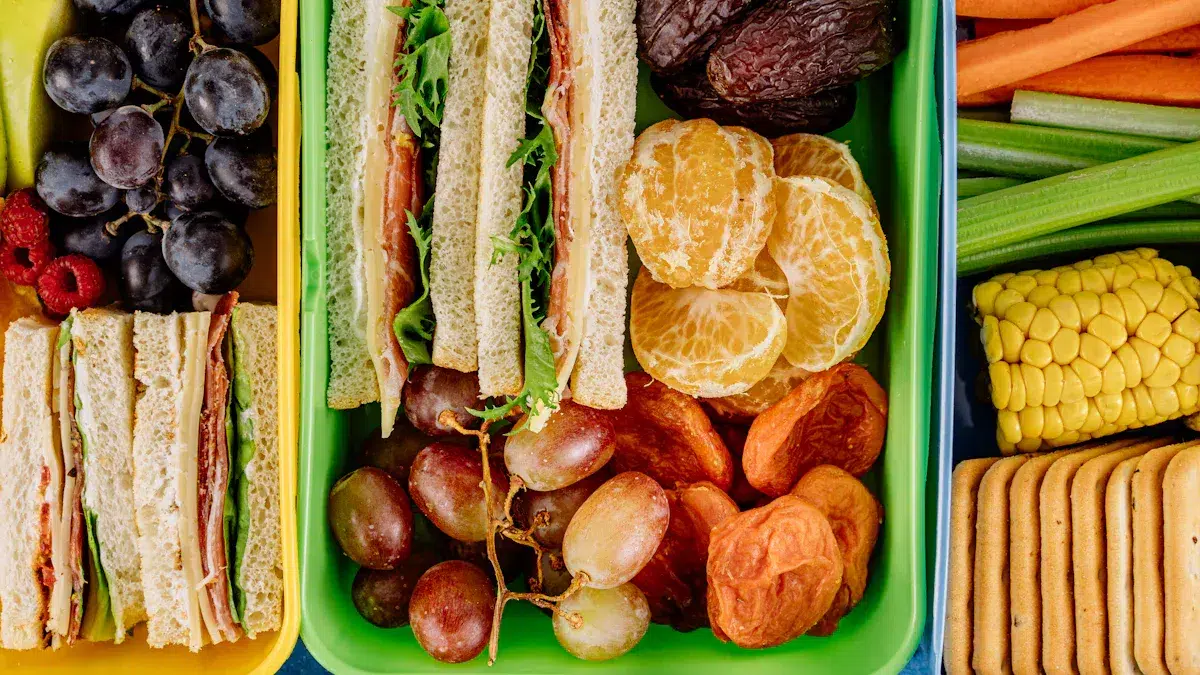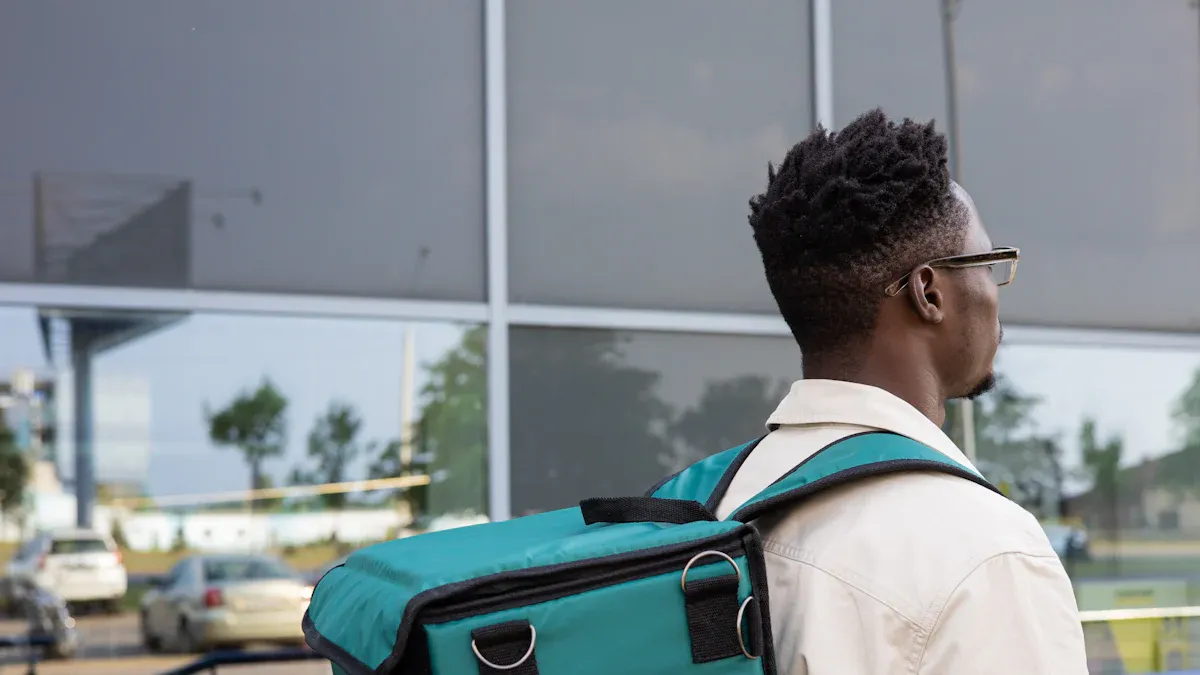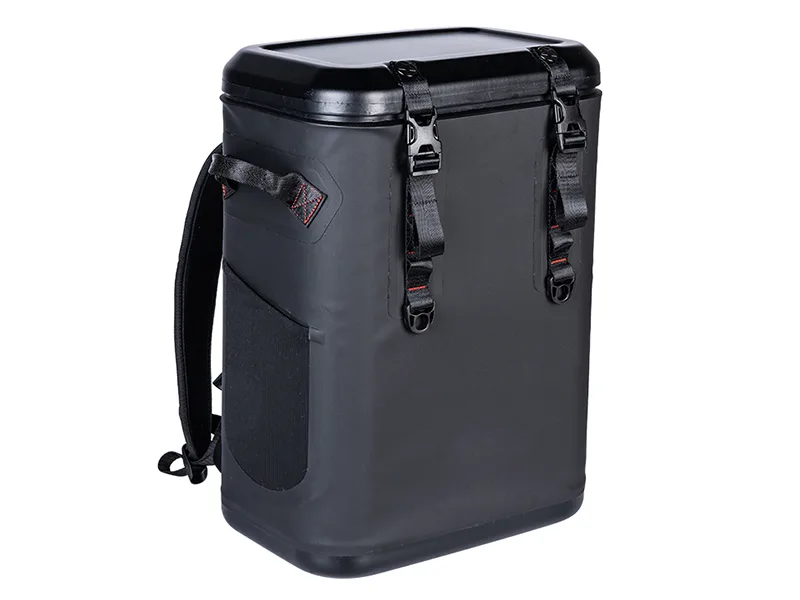
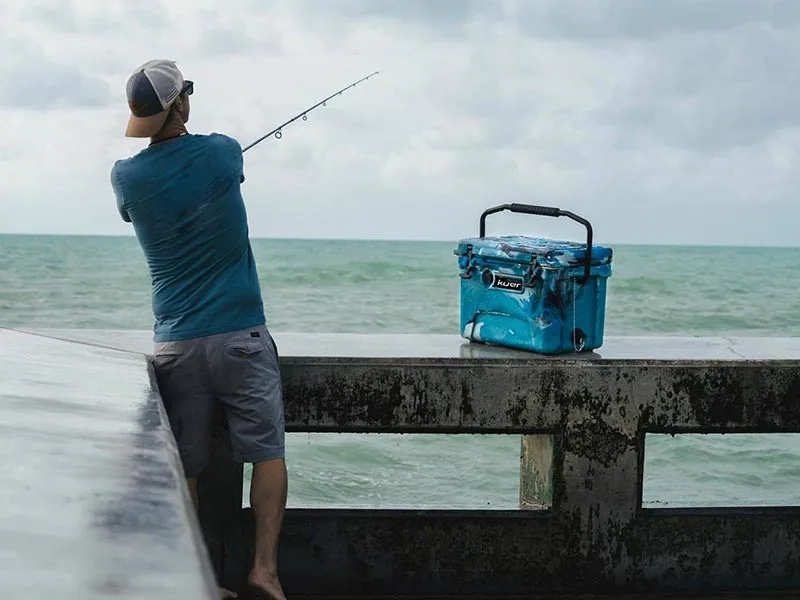
You want your catch to stay fresh, so picking the right fishing ice box really matters. Imagine pulling up a full stringer, only to find your icebox cooler is too small—now your fish spoil before you get home. Or maybe you lug a huge cooler, but only catch a few fish, and the extra ice just takes up space. The right fish box cooler keeps your trip hassle-free and your catch safe. Think about your usual fishing or hunting needs, and ask yourself how much space you really use each trip.
KUER one of the leading cooler box manufacturers, our design ensure your cooler box performs at its best. If you wonder how does a cooler box work, the answer lies in the science of insulation and smart engineering.
Why Size and Capacity Matter
Freshness and Safety
When you pick the right size cooler, you give your fish the best chance to stay fresh and safe. Fish spoil quickly if you do not chill them right away. A fishing cooler with the right capacity helps you keep your catch at the perfect temperature—between 32°F and 36°F. This slows down bacteria and keeps your fish tasting great.
Tip: Always pre-chill your fishing cooler before you leave home. This helps the ice last longer and keeps your fish colder.
Here’s why the right size and capacity matter for freshness and safety:
- Larger insulated fish box coolers keep low temperatures longer, which is key for slowing spoilage.
- A right size cooler lets you pack fish and ice together, so every fish touches the cold.
- Drainage features in a fishing cooler stop water from building up, which helps prevent contamination.
- Food-safe materials like HDPE or PP make cleaning easy and keep your catch safe.
- Insulated coolers help you follow food safety rules and keep your fish fresh during transport.
If you use a cooler that is too small, you might not fit enough ice or fish. If it is too big, you waste ice and space. Cooler capacities should match your usual catch and trip length.
Avoiding Overpacking
Packing your fish box cooler the right way is just as important as picking the right size. Overpacking can ruin your catch and waste your ice. Take a look at how packing style affects your results:
| Packing Style | Effect on Ice Retention and Fish Quality |
|---|---|
| Overpacked | Less airflow, ice melts faster, fish spoil quicker, and fish can get crushed. |
| Underpacked | Too much warm air, ice melts fast, cooling does not work well. |
| Just Right | Snug fit, good airflow, ice melts slowly, fish stay fresh longer. |
You want a cooler that fits your needs—not too big, not too small. Cooler capacities should match your typical catch. The right size cooler helps you avoid overpacking, keeps your fish safe, and makes your fishing trip easier.
Assessing Your Needs
Choosing the right size cooler starts with knowing your own fishing or hunting needs. You want a fishing cooler that fits your catch, keeps everything cold, and is easy to carry. Let’s break down what you should think about before you buy.
Typical Catch Size
Think about the kind of fish you usually catch. Are you after small panfish, or do you go for big game like tuna or salmon? The size of your fishing cooler should match the average size and number of fish you expect to bring home. If you often catch larger fish, you need a longer cooler so the fish can lay flat. For smaller catches, a compact cooler works well and saves space.
You also need to plan for the right amount of ice. Experts recommend using about two pounds of ice for every pound of fish. Crushed ice works best because it covers the fish and cools them quickly. If you fish in hot weather or plan to stay out all day, add extra ice to make sure your catch stays fresh. In tropical climates, you might need up to three pounds of ice for every pound of fish. Always layer ice under, around, and on top of your fish for the best results.
Tip: Add about 30% more ice than you think you need. This helps make up for heat loss during your trip and keeps your fish cold until you get home.
Trip Duration
How long you plan to stay out fishing makes a big difference in the size and type of fishing cooler you need. Short trips with a quick catch might only need a small cooler and a little ice. If you’re heading out for a full day or even a weekend, you’ll need a cooler with more space and better insulation.
- Use two pounds of ice for every pound of fish, and mix the fish and ice evenly.
- Crushed ice cools fish faster than ice blocks.
- On long trips, replace the ice every few hours to keep fish from soaking in water.
- Clean your fish right away and pack ice inside the cavity to keep them fresh.
- For multi-day trips, hard-side roto-molded coolers hold ice longer but can be heavier.
- Fill empty spaces in the cooler with towels or frozen jugs to help ice last longer.
- If you travel by air or stay out for several days, freeze your fillets before packing them.
Longer trips mean you need more ice and a cooler that can keep things cold for a long time. Sometimes, it helps to bring two coolers—one for snacks and drinks, and one just for fish. This way, you open the fish cooler less often and keep the cold air inside.
Group Size
The number of people on your trip also affects the size of your fishing cooler. If you fish alone or with one friend, a small cooler might be enough. For family trips or group outings, you’ll need a bigger cooler to hold everyone’s catch, food, and drinks.
Here’s a quick guide to help you choose:
| Group Size | Recommended Cooler Size Examples |
|---|---|
| 1 person (day trip) | Small coolers like Roadie 15, Hopper Flip 12, Daytrip 14L |
| 2-4 people (1-2 days) | Medium coolers such as Hopper Flip 18, Tundra 35 |
| 4-6 people (2-3 days) | Large coolers like Tundra 65, Tundra 75, Hopper M30 |
| 6+ people (3+ days) | Very large coolers including Tundra 110, 125, 160, 210, 250 |
As your group gets bigger, you need more space for fish, food, and ice. Sometimes, it’s smart to bring more than one cooler. You can use one for drinks and snacks and another for your catch. This keeps everything organized and helps your ice last longer.
When you think about your fishing or hunting needs, remember to balance cooler size with portability. A huge cooler holds more, but it can be hard to move. Look for coolers with sturdy handles and good insulation. The right size cooler makes your trip easier and keeps your fish fresh from the first cast to the last.
Fishing Cooler Sizes
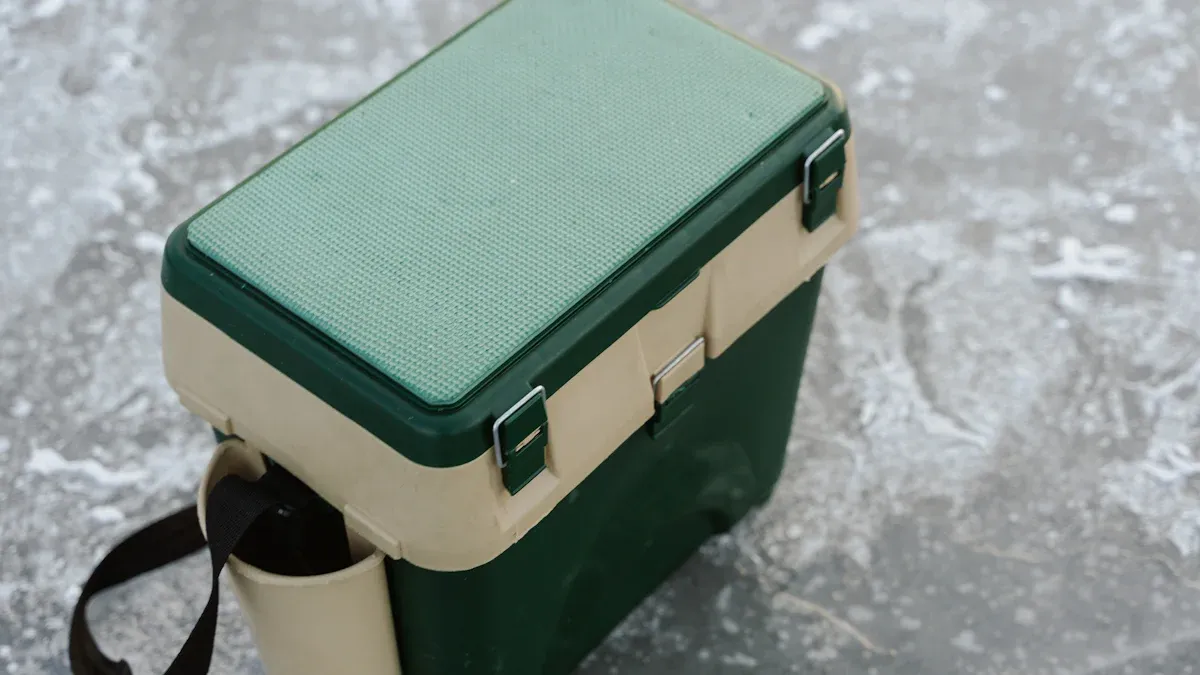
Small, Medium, Large
When you shop for a fishing cooler, you’ll see lots of sizes. Picking the right one depends on your trip, your catch, and how much you want to carry. Most coolers fall into three main groups: small, medium, and large. Here’s a quick look at how they compare:
| Cooler Size | Quart Range |
|---|---|
| Small | Up to 20 quarts |
| Medium | 21 to 50 quarts |
| Large | 51 quarts and above |
Small coolers work best for short trips or when you fish alone. They’re light and easy to carry. Medium coolers fit most day trips and family outings. You get enough space for your catch and some drinks or snacks. Large coolers hold a lot. They’re great for big groups, long weekends, or when you expect a big haul.
Most anglers pick a fishing cooler in the 20-50 quart range. This size gives you a good balance between storage and portability. You can carry it by yourself, but it still holds plenty of fish and ice. If you only fish for a few hours, a small cooler under 20 quarts might be all you need. For longer trips or bigger catches, you might want to go bigger.
Tip: If you plan to fish with friends or family, think about a medium or large cooler. You’ll have room for everyone’s catch and enough ice to keep it fresh.
Length vs. Width
When you choose a cooler, don’t just look at how much it holds. The shape matters, too. Fish come in all shapes and sizes, so you want a cooler that fits your catch.
- Longer coolers work best for long, skinny fish like mackerel or kingfish. You can lay the fish flat without bending or breaking them.
- Wider coolers give you more space for lots of smaller fish. They’re also handy if you want to store drinks and snacks with your catch.
- If you target big fish, a longer cooler helps you keep them whole and fresh.
- Fish bags are flexible and easy to store. You can roll them up when you’re done. They’re also easy to clean at home.
- Built-in fish boxes save space on your boat, but they can be hard to clean and don’t hold as much.
- Some anglers use more than one cooler or mix coolers and fish bags. This way, you can handle different fish sizes and keep things organized.
You might notice that longer coolers sometimes have less space for lots of small fish. If you usually catch a mix, you may want to use both a long cooler and a wide one. Think about what you catch most often and how you like to pack your fish.
Cleaning matters, too. Portable coolers and fish bags are easy to rinse out at home. Built-in boxes need cleaning on the boat, which can take more time.
Note: Coolers take up more space on your boat, but they keep your fish cold for longer. Fish bags save space and are easy to carry, but they may not keep ice as long as a hard cooler.
Choosing the right size cooler means thinking about your catch, your trip, and your boat. The right size cooler keeps your fish fresh and makes your trip easier from start to finish.
Insulation & Build Quality
Ice Retention
When you pick a fishing cooler, you want your ice to last as long as possible. The secret is in the insulation. Thicker insulation keeps the cold inside and the heat out. Premium coolers usually have walls that are 2 to 3 inches thick. This can keep your ice frozen for up to five days, even when you’re out in the sun. If you use a cooler with less than 1 inch of insulation, your ice might only last a day or two.
The type of insulation matters, too. Polyurethane foam is one of the best materials for holding in the cold. It creates a strong barrier against heat. Some coolers even use special layers, like aluminum foil, to reflect heat away and add a few more hours of ice retention. If you plan long trips, look for a cooler with thick, high-quality insulation.
Here’s a quick look at how insulation thickness affects ice retention and weight:
| Cooler Type | Foam Thickness | Approximate Ice Retention | Weight Impact |
|---|---|---|---|
| Soft Basic | 1 inch | 6–8 hours | +1 lb per ft² |
| Soft Enhanced | 2 inches | 12–16 hours | +2 lbs per ft² |
| Hard Standard | 3 inches + foil | 24–36 hours | +8 lbs total |
| Hard Premium (VIP) | 3 inches + VIP | 48+ hours | +10 lbs total |
High-quality fishing coolers, like those made with roto-molded construction, can keep ice for up to five days. That’s perfect for long fishing trips when you need your catch to stay fresh.
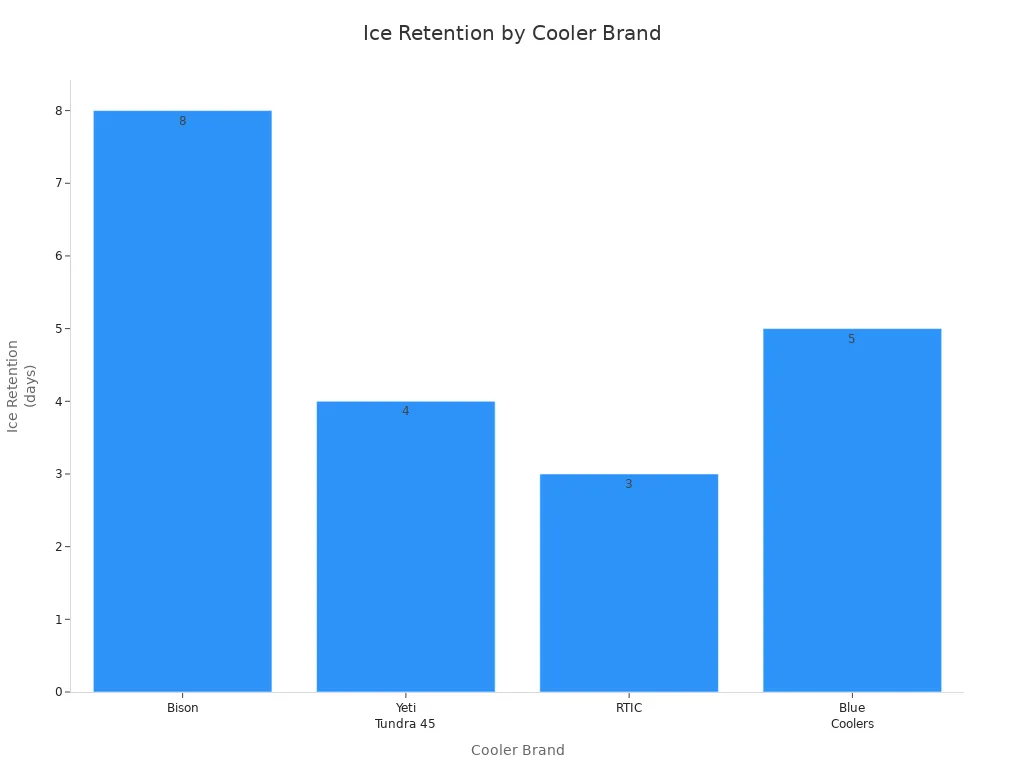
Durability
You want a cooler that can handle rough trips, saltwater, and heavy loads. Roto-molded coolers stand out because they have seamless, thick walls made from strong plastic. This design makes them tough and resistant to cracks or damage. You can even use them as a seat or a cutting board on your boat.
Here’s what makes a cooler durable:
- Roto-molded plastic bodies resist dents and cracks.
- Stainless steel or aluminum hardware prevents rust and breakage.
- UV-resistant exteriors protect against sun damage.
- Odor and stain-resistant liners keep your cooler clean and fresh.
KUER’s coolers use advanced roto-molded construction and strict quality control. The company’s R&D team has years of experience, so you get a cooler built to last. These coolers can take a beating and still keep your fish cold trip after trip.
Tip: Always check for airtight seals and sturdy latches. These features help lock in the cold and keep your cooler working its best.
Choose the Right Fishing Cooler Features
Portability
When you head out for a day on the water, you want a cooler that is easy to carry. The weight and handle design make a big difference. Soft-sided coolers, like the Yeti Hopper, are light and foldable. You can sling them over your shoulder or tuck them into a kayak. Hard coolers are heavier but offer more protection and ice retention. Look for comfortable handles or padded straps. These help you move your cooler from your car to your boat without a struggle.
| Aspect | Impact on Portability for Anglers |
|---|---|
| Weight | Lightweight coolers are easy to carry and great for kayak or paddle board fishing. Heavy coolers are less portable but more durable. |
| Handle Design | Good handles and straps make it simple to carry your cooler. Poor handles make it tough, especially if the cooler is heavy. |
| Cooler Type | Soft coolers are light and foldable. Hard coolers are sturdy but bulkier. |
| Fishing Scenario | Kayak fishing needs compact, light coolers. Boat fishing allows for bigger, heavier coolers. |
Tip: If you fish from a kayak or small boat, pick a cooler that fits your space and is easy to lift.
Storage Space
You need to think about where your cooler will go. Small boats and kayaks have limited room. Space-efficient designs, like insulated kayak bags or compact soft coolers, fit tight spots and still keep your catch cold. Hard coolers, such as the Pelican 30QT Elite or RTIC Ultra-Tough 20QT, offer strong insulation and smart features in a small footprint. These coolers often have non-skid feet and tie-down slots, so they stay put even when the water gets rough.
If you have a bigger boat, you can use a larger cooler with more capacity. Always measure your storage area before you buy. You want your cooler to fit without blocking walkways or gear. When you choose the right fishing cooler, you match your fishing or hunting needs with the space you have.
Extra Features
Modern coolers come packed with features that make your trip easier. Built-in drainage systems let you empty melted ice fast. Integrated cutting boards give you a clean spot to prep your catch. Heavy-duty latches and airtight gaskets keep the cold in and water out. Some coolers even have wheels, bottle openers, or fish rulers on the lid.
Recreational anglers love coolers that are easy to clean and multi-functional. Simple drainage systems, like a basic hole with a thru-hull fitting, work best. Short plumbing runs make cleaning easier and prevent clogs. Access points for maintenance help you keep your cooler in top shape.
Note: High-end coolers use rotomolded shells, thick foam insulation, and strong latches. These features help your cooler last for years and keep your fish fresh, even on long trips.
When you look at all these features, you can see why it pays to choose the right fishing cooler for your next adventure.
Choosing the right fish box cooler makes your fishing trips smoother and keeps your catch fresh. Start by thinking about your usual catch, how long you stay out, and how much ice you need. Use this quick checklist to help you decide:
| Cooler Size (cm) | Max Weight (kg) | Best Use Case |
|---|---|---|
| 50–60 | 30–40 | Short trips, small boats |
| 80–90 | 60–67.5 | Big catches, long trips |
Look for strong build, long ice retention, and easy cleaning. KUER offers coolers built for quality and performance. The right choice means less hassle and more fun every time you fish.
FAQ
How do I figure out what size fish box cooler I need?
Think about your usual catch and trip length. For a day trip with one or two people, a 20–50 quart cooler works well. If you fish with a group or stay out longer, go bigger. Always leave space for ice.
How much ice should I pack in my cooler?
You should use about two pounds of ice for every pound of fish. In hot weather, add more. Crushed ice covers fish better and keeps them colder. Pre-chill your cooler for the best results.
What’s the best way to clean my fishing cooler?
Rinse your cooler with fresh water after every trip. Use mild soap and a soft brush for tough spots. Dry it with the lid open. This stops mold and keeps your cooler smelling fresh.
Tip: Sprinkle baking soda inside to remove odors.
Can I store drinks and fish in the same cooler?
You can, but it’s better to keep them separate. Fish can leak and make drinks taste or smell bad. If you must use one cooler, pack fish in sealed bags and keep drinks on top.


